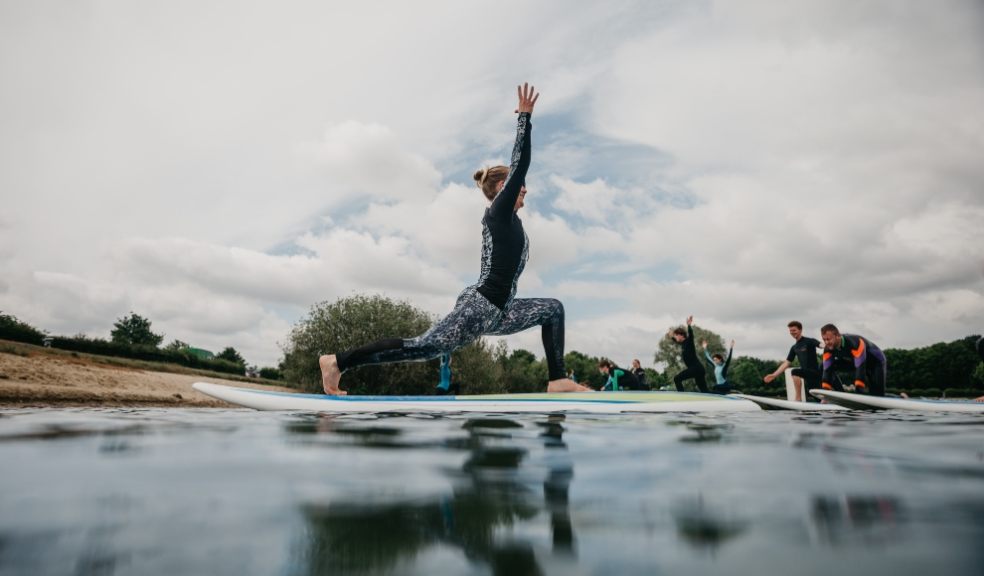
Experts SUPer Beginners Guide to Paddle Boarding
As more of us look towards bettering our physical and mental wellbeing, we are branching out and attempting new sports. In fact, approximately 11.8 million people participated in boating activities once or more in 2021, showing an increase of interest by almost double from the previous year.
So why not get back onto the water by trying your hand at paddle boarding?
Here, we will explore what you need, from safety measures and equipment choice to balancing tips.
Equipment
Your board
When choosing your paddle boarding equipment, you need to find the right board first. Choose a wider, longer, thicker board as your beginner paddle board. The greater the space on the board, the easier your stance will be while learning to transition from kneeling to standing. This will give you the best chance of maintaining your balance as you learn to navigate the waters.
As you improve your balance and technique, you can start advancing to shorter and thinner boards. This will test your core strength and should be considered when you delve further into the sport.
Choosing a leash
A leash can be a good safety measure for beginners. As you are likely to fall off the board often, learning to balance and self-correct, you don’t want your board to drift too far away. You might consider different leashes, including a waist, ankle, or bicep leash.
Ben Cook, from SUP specialists Wave, says: “Keeping safe while paddle boarding is key for all our customers, whether you are an experienced paddle boarder or someone trying the sport for the first time. When buying a leash, you should consider the water you will be dealing with. Most learners should practice on flat water until they are experienced enough to handle their board.
“An ankle cuff leash is perfect here for beginners as it offers the best chance to learn without losing your board each time you fall off! If you are starting to experience more turbulent waters, you might want to consider transitioning to a waist leash, which can be the quickest release in case of danger.”
Safety
Practice
As with any sport, practice makes perfect. According to the Royal National Lifeguard Institution, you should consider getting training lessons on land before hitting the water. This can teach you the correct techniques when mounting, dismounting and moving your board, as well as the best safety precautions for when you are out on the water.
Falling
No matter your experience level, you are going to fall into the water at some point. This is especially so for beginners learning to maintain their balance on the board. While you are still learning to paddle board, you will want to learn to fall and remount your board safely. Ensure you are in safe water, preferably waist or chest deep, to prevent injury – if you are nervous about remounting, stay close to the shore.
When falling, make sure you fall away from your board. This can be either falling straight back off the tail of the board or to the side. Remember, paddle boarding is a water sport, so embracing the water is natural. The best way to fall is flat. You should be wearing a flotation device of some sort to help with the fall.
Water choice
The best way to remain safe is to keep to a level you’re comfortable with until you have further training. You don’t want to be learning to paddle board for the first time in aggressive water. Instead, find flat water lakes or other calm waters to practice your techniques. Attempting a big wave could lead to injury.
Movement and balance
Starting position and transitioning
When you are starting to go out onto the water, you will want to be kneeling in the middle of the board. At this point, pushing away from shore, your paddle should be in front of you, perpendicular to your board. Once you are confident that you are balanced, you can start rowing slowly, alternating between sides.
When you are at a comfortable distance from the shore and feel steady enough to stand up, do so one foot at a time. Make sure your feet are pointing forward, shoulder width apart, and your knees slightly bent to help you maintain your balance.
Maintaining balance
Now that you are up on your board, you will want to keep your balance. If your stance is correct, you should be fairly balanced already, but once you start paddling, it can become harder to maintain stability. For the best chance of staying on your board, remember to paddle with your core. Your centre should be tight. Keeping an eye on the horizon will also help maintain this, as looking down at your board and where you are paddling could throw you off centre.
Look after your valuables!
Don’t forget to make sure your valuables are safe. Keeping your phone close by is about more than just making sure you an get that all-important selfie: it could save lives if you or another water user gets into difficulties. Use a waterproof phone case – make sure it’s got a safety strap or lanyard – to keep the phone close at hand but also out of harm’s way.
According to a study by Holiday Cottages, Stand Up Paddle Boarding (SUP) was the water sport most Brits wanted to try in 2021, with over 40% of people in all age categories wanting to give it a try. And why not? It is an incredible workout that gives you the beauty and tranquillity of being out on the open water.













